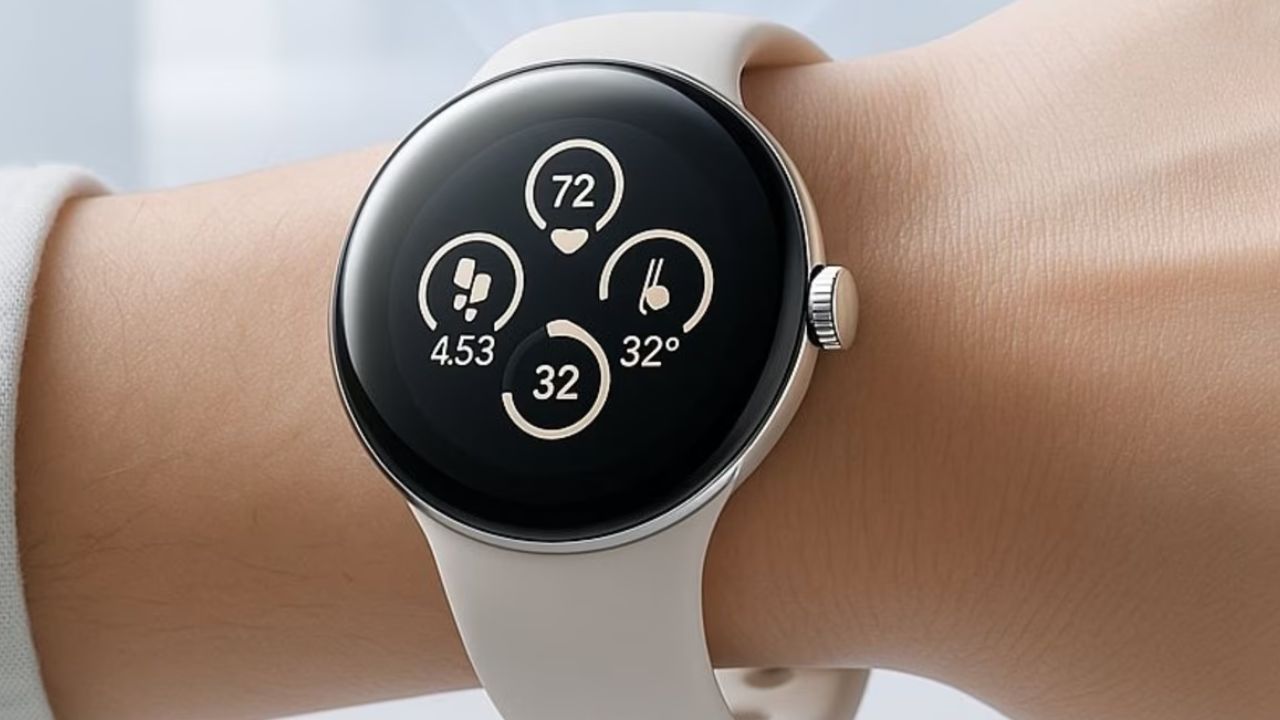If you’ve ever felt frustrated trying to track your strength training sessions with a smartwatch, you’re not alone. While most wearables excel at monitoring your morning jogs or bike rides, they’ve largely ignored the millions of people who prefer pumping iron to pounding pavement. That’s about to change with Google’s upcoming Pixel Watch 4, which promises to finally bridge the gap between smartwatch technology and serious strength training.
Why Current Smartwatches Fall Short for Gym-Goers
Walk into any gym and you’ll see people wearing smartwatches, but ask them about tracking their workouts and you’ll likely hear complaints. Current fitness wearables, including previous Pixel Watch models, treat strength training as an afterthought. They might count your reps (sometimes incorrectly) and estimate calories burned, but they don’t provide the detailed insights that serious lifters need.
The problem isn’t just with Google’s devices. Most smartwatch manufacturers have focused heavily on cardio activities because they’re easier to track. Running and cycling generate consistent, measurable data patterns that sensors can easily interpret. Strength training, on the other hand, involves complex movements, varying intensities, and rest periods that challenge traditional tracking methods.
The Pixel Watch 4’s Strength Training Revolution
Recent reports suggest Google is finally addressing this gap with comprehensive strength training features in the Pixel Watch 4. The centerpiece appears to be a new Workout Builder that would allow users to create custom interval workouts complete with warm-up and cool-down periods.
This isn’t just about counting reps. The new system would help users structure their entire gym sessions, potentially offering guidance on rest periods, exercise sequences, and proper workout progression. For anyone who’s ever wandered around the gym unsure of what to do next, this could be transformative.
Smart Programming Meets Wearable Technology
What makes this particularly exciting is the focus on injury prevention and performance optimization. Many gym injuries happen because people skip warm-ups, rush through workouts, or don’t allow adequate recovery time. A smartwatch that actively guides users through proper workout structure could genuinely improve both safety and results.
The Workout Builder could also democratize access to quality fitness programming. Not everyone can afford a personal trainer, but having structured, customized workouts available on your wrist makes professional-level guidance more accessible to regular gym-goers.
Cardio Gets Smarter Too
Google isn’t abandoning its cardio roots with the Pixel Watch 4. Runners can expect significant upgrades, including AI-powered run recommendations exclusive to Fitbit Premium subscribers. This feature would analyze your training history, fitness level, and goals to suggest optimal workout plans.
Advanced Running Metrics for Serious Athletes
The new watch is expected to track sophisticated running metrics that were previously only available on specialized devices:
Cadence and Stride Length: Understanding your running efficiency can help improve speed and reduce injury risk.
Vertical Oscillation: This measures how much you bounce while running, with less vertical movement generally being more efficient.
Ground Contact Time and Balance: These metrics reveal how your feet interact with the ground, providing insights into running form and potential imbalances.
Vertical Ratio: This compares your vertical movement to your forward progress, helping optimize running efficiency.
These aren’t just numbers for data enthusiasts. Serious runners use these metrics to fine-tune their form, prevent injuries, and improve performance over time.
Better Support for Other Activities
Swimming and cycling enthusiasts should also see improvements with the Pixel Watch 4. Current smartwatches often struggle with accurate swim tracking, particularly in pool environments where GPS doesn’t work. Google appears to be addressing these limitations with enhanced algorithms and potentially improved sensors.
Cycling tracking should become more sophisticated too, though specific details remain unclear. Better GPS accuracy, improved heart rate monitoring during high-intensity efforts, and more detailed power and cadence tracking could all be part of the package.
Smarter Activity Recognition
One of the most practical improvements might be enhanced automatic activity recognition. Current Pixel Watch models sometimes fail to detect when you’ve started exercising, or they might confuse one activity for another. The Pixel Watch 4 could use improved AI algorithms to automatically identify different types of workouts with greater accuracy.
This means less manual input and more seamless tracking. Whether you’re lifting weights, doing yoga, or playing tennis, the watch would ideally recognize and track your activity without requiring you to manually select the workout type.
The Technology Behind the Improvements
These upgrades likely depend on a combination of better sensors, more powerful processors, and advanced AI algorithms. Modern smartwatches have significantly more computational power than their predecessors, enabling real-time analysis of complex movement patterns.
Google’s access to vast amounts of fitness data through Fitbit also provides a unique advantage. The company can use anonymized data from millions of users to train AI models that better understand human movement and exercise patterns.
What This Means for Regular Users
For most people, these improvements translate to more accurate, useful, and motivating fitness tracking. Instead of just seeing basic statistics after your workout, you’d get actionable insights that could actually help improve your fitness journey.
The strength training features are particularly significant because they address a major gap in the wearable fitness market. If Google delivers on these promises, the Pixel Watch 4 could become the first mainstream smartwatch that truly serves both cardio enthusiasts and strength training devotees.
When Can You Get Your Hands on It?
Google has announced an event for August 20th, where the Pixel Watch 4 is expected to debut alongside new Pixel smartphones. While official pricing hasn’t been announced, it will likely follow Google’s pattern of positioning Pixel devices as premium but competitive alternatives to Apple and Samsung offerings.
The real question isn’t just when the Pixel Watch 4 will arrive, but whether Google can deliver on these ambitious fitness promises. If they succeed, it could reshape how we think about smartwatch fitness tracking and finally give gym enthusiasts the tool they’ve been waiting for.
